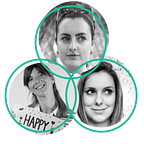Flowcharts and Personas [UX Camp Dublin 2016]
The first UXCamp Dublin in 2016 was a completely success!
I was happy of being selected as one of the Best Speakers there.
Thank you all who voted for me :)
Loved the presentations and the way the people were sharing the insights with such a great spirit and remembering the soul of this event.
I was hosting a session with my insights about “Flowcharts + Personas and a Love Story”. People were very receptive and asking some interesting questions around Personas.
I was presenting how I use the Flowcharts + Personas in a ‘AS it IS scenario’, when something is already built.
I tend to use this method whenever I need to share with my team things we have found from previous analysis:
1. If I have the need to review a concept.
Strategic point of view according to business requirements.
2. If I need to provide feedback about patterns found from User Research. User testing, user interviews or any carried on workshop I found a pattern.
3. If I need to review existing interactions with usability problems, incorrect or unexpected pages or wrong feedback to users.
4. If the requirement is based on customer feedback or complaints.
Call center feedback, walk-thorough tasks.
I also use Flowcharts + Personas when I need to explain o justify my design decisions around a new concept, in a TO BE scenario.
In the afternoon, I also carried on a workshop about “Mapping the experience”.
It was only 1 hour workshop and it should be 2 hours at least, but I’m glad I could share in one shoot what this is about.
I carried on this workshop before when I was working in Globoforce, (August, 2015) in 3 hours and I invited people from different parts of the company with completely different backgrounds and skills.
It was lovely to see developers and QAs engaged on the workshop trying to understand our processes as designers.
After the workshop people worked more collaboratively havign a better understanding of our role in the team in our Agile environment.
Five tables (8–9 people each) and the target was working within the group of the table you were sat in.
I gave an intro about what the experience mapping is and how we use it to describe visually the outcomes gathered from user research.
In the workshop I asked people to describe individually what was the most frequent everyday actions in their morning journeys.
The goal was to focus on the main daily actions (like taking a shower, having coffee, brushing teeth, as examples) and connect those actions to a feeling and thinking.
Departing from they hear the alarm clock until they arrive work, using postips and paste them into sheet of paper (following the timeline).
The idea was to represent a timeline through those actions and feelings.
The outcome of it was to have their own timeline of what they normally do everyday in the morning graphic in one sheet of paper like the example below.
People need to create a template where they could put all their morning journeys together.
They used a craft paper we had and they pasted on the walls of the room.
The most important thing was to respect any member of the group morning journey without changing or messing around their data.
It was important also to capture 1 line per journey per person in order to capture the feelings and thinking according to particular actions and also keeping the connection between one activity to the following one.
The third and last activity was to connect and find the patterns in actions and feelings around people in one template (1 map).
Visually they could see repetitive feelings around the alarm clock or traffic jam, and they could visualize and count the pain points and new opportunities.
The workshop ended up with some examples of experience mapping created by myself and some others extracted from Internet from very well known companies who works with this type of methods in their projects.
I couldn’t make it without the input and help of Rohini Gosain.
Thank you :)
As I mentioned before the event was a great experience in general and I have to say that we can’t wait for next year to come!
Thanks to Diego Dalia and the rest of the IBM Design Dublin Studio crew who organized an amazing event full of interesting insights.
Originally published at medium.com on March 28, 2016.
